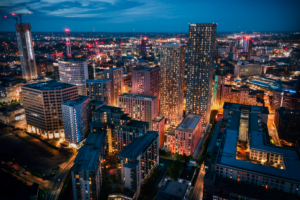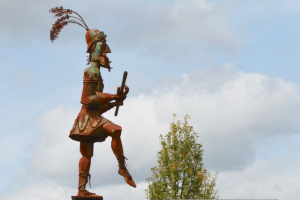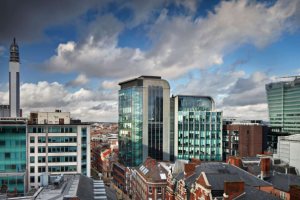My Favourite Building – Empire State Building

THIS week on My Favourite Building, David Martin, a director in the Birmingham office of property consultancy GVA Grimley, tells how watching King Kong sparked his love affair with a New York icon.
If you would like to take part in ‘My Favourite Building’, please email tamlyn.jones@thebusinessdesk.com.
AS a child watching the 1933 movie starring Fay Wray, I was awe struck not only by the film King Kong, but also New York, in particular the Empire State Building. However, as a fledgling building surveyor, I was more and more impressed with the technical issues faced by the design team and contractor.
Designs were produced for the Empire State Building within two weeks and work on the excavation of the site began on January 22, 1930, before completion just a over a year later on May 1, 1931, when it was opened by President Herbert Hoover.
The Empire State Building was the first to have more than 100 floors. It has 6,500 windows and 73 elevators, and there are 1,860 steps from street level to the 102nd floor. Its base is about two acres and it has a total floor area of 2,768,591 sq ft.

In the aftermath of the World Trade Center disaster, I was reminded of this landmark building again as similarities were drawn and construction techniques were scrutinised. The Empire State is a steel framed building where traditional heavy high rise construction used.
On July 28, 1945, a B-25 Mitchell bomber, piloted in thick fog by Lieutenant Colonel William Franklin Smith Jr., crashed into the north side of the Empire State Building, between the 79th and 80th floors, where the offices of the National Catholic Welfare Council were located.
One engine shot through the side opposite the impact and flew as far as the next block, where it landed on the roof of a nearby building, starting a fire that destroyed a penthouse.
The other engine and part of the landing gear plummeted down an elevator shaft. The resulting fire was extinguished in 40 minutes and 14 people were killed in the incident. The World Trade Center towers collapsed partly due to the spread of fuel from the impact starting many fires.
In 2005, I was lucky enough to visit New York during a particularly cold spell. My first port of call as a tourist was to visit the Empire State Building, boring anyone who would listen about the lack of health and safety, Red Indian workers, costs to build and items of specification interest.
On reaching the observation deck, I was struck by the mists at this height and then realised it was low-lying cloud! My wife and I braved the cold and walk around the whole of the deck level retreating inside for warmth.
I had previously bought a bottle of coke and on recovery of feeling in my fingers went to take a drink – only noticing that the bottle in a few short moments had frozen. It was then I knew I had visited the tallest building in New York and the history associated with it became even more poignant.
Its title derives from the nickname for state of New York, The Empire State. It stood as the world’s tallest building for more than 40 years, from its completion in 1931 until construction of the World Trade Center’s North Tower was completed in 1972. It once again became the city’s and the state’s tallest following 9/11.
The project involved 3,400 workers, mostly immigrants from Europe, along with hundreds of Mohawk ironworkers, many from the Kahnawake reserve near Montreal. According to official accounts, five workers died during the construction.
Click through to read about the launch of the new ‘Big City Plan’ for Birmingham.









